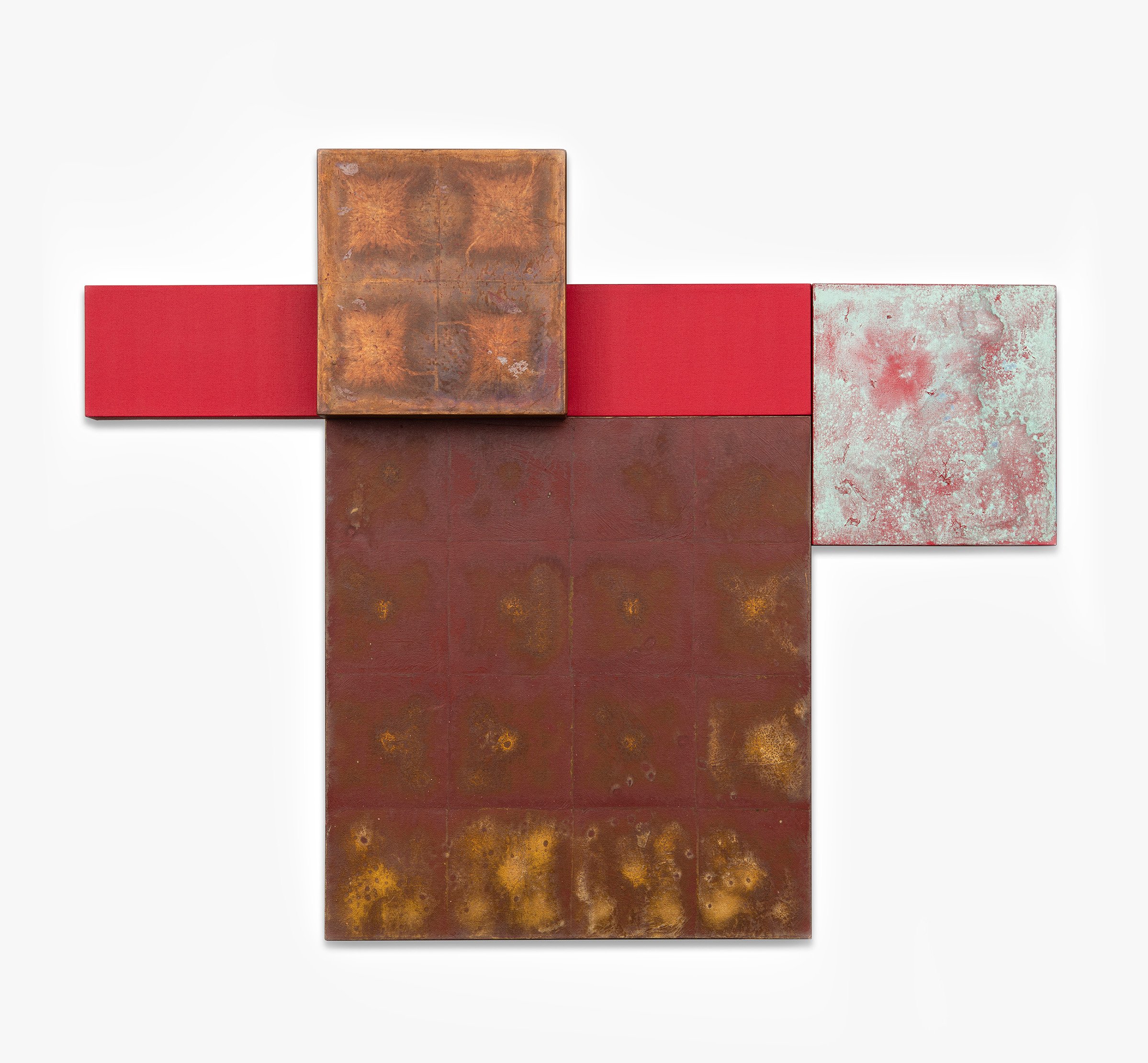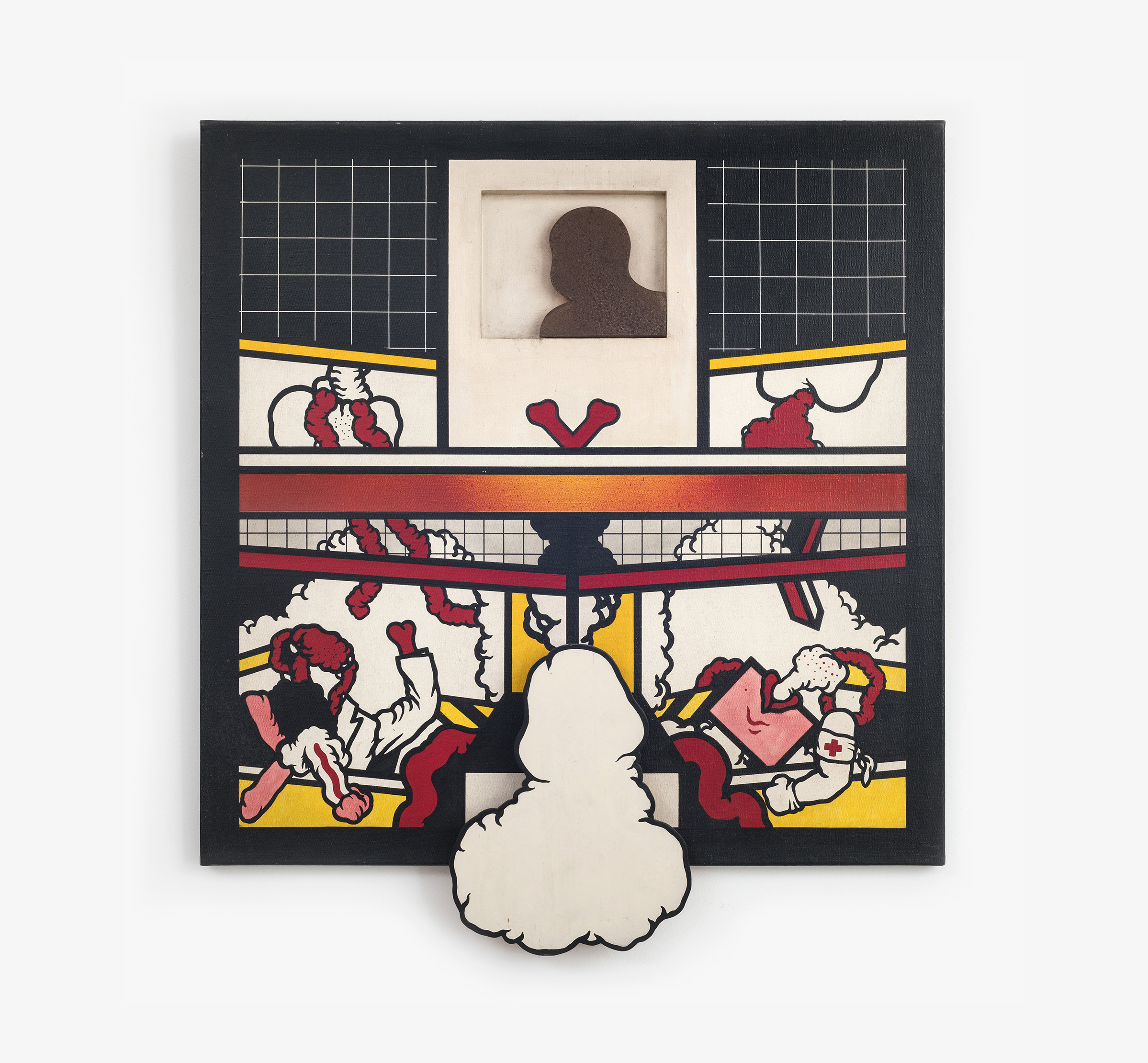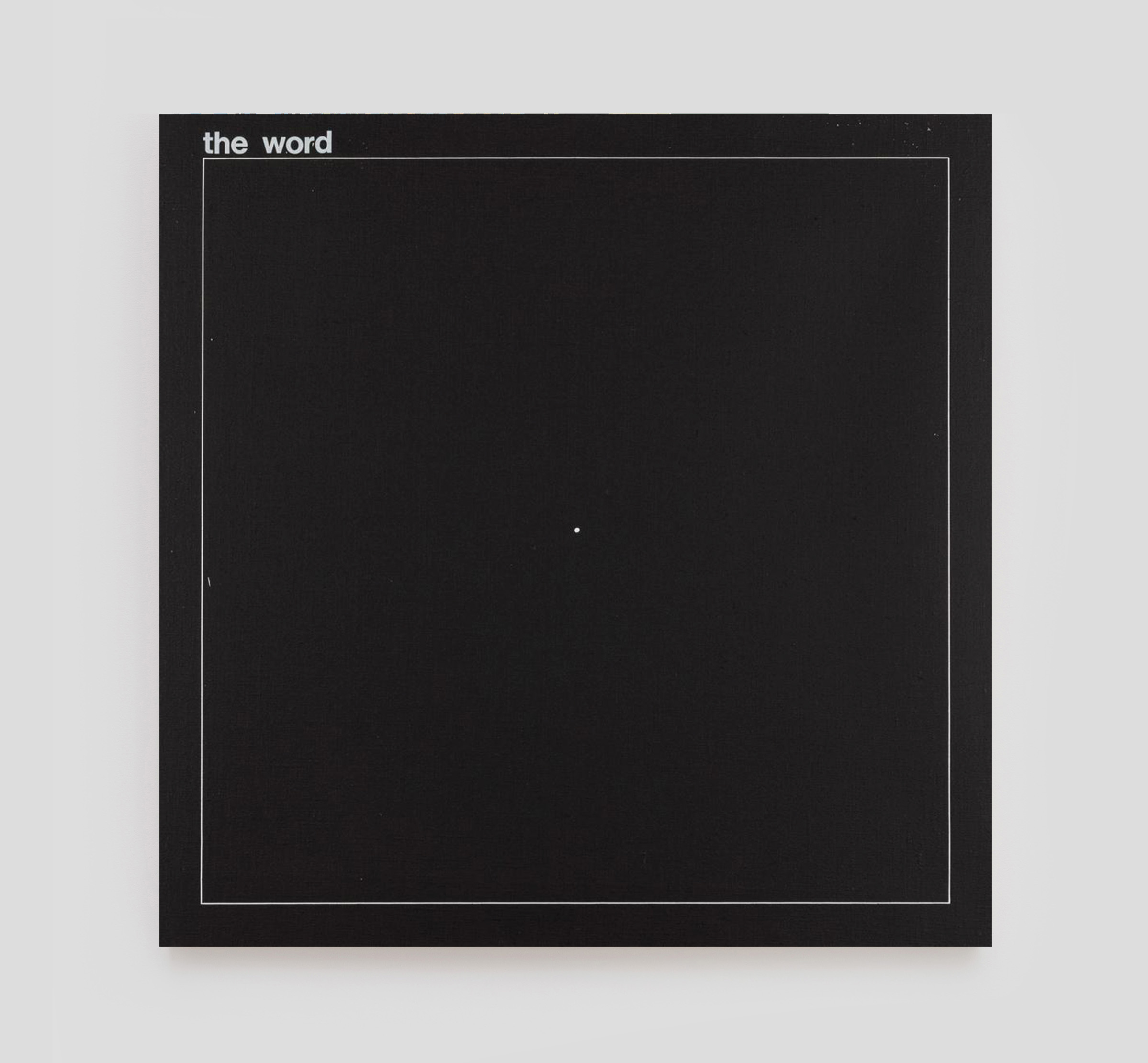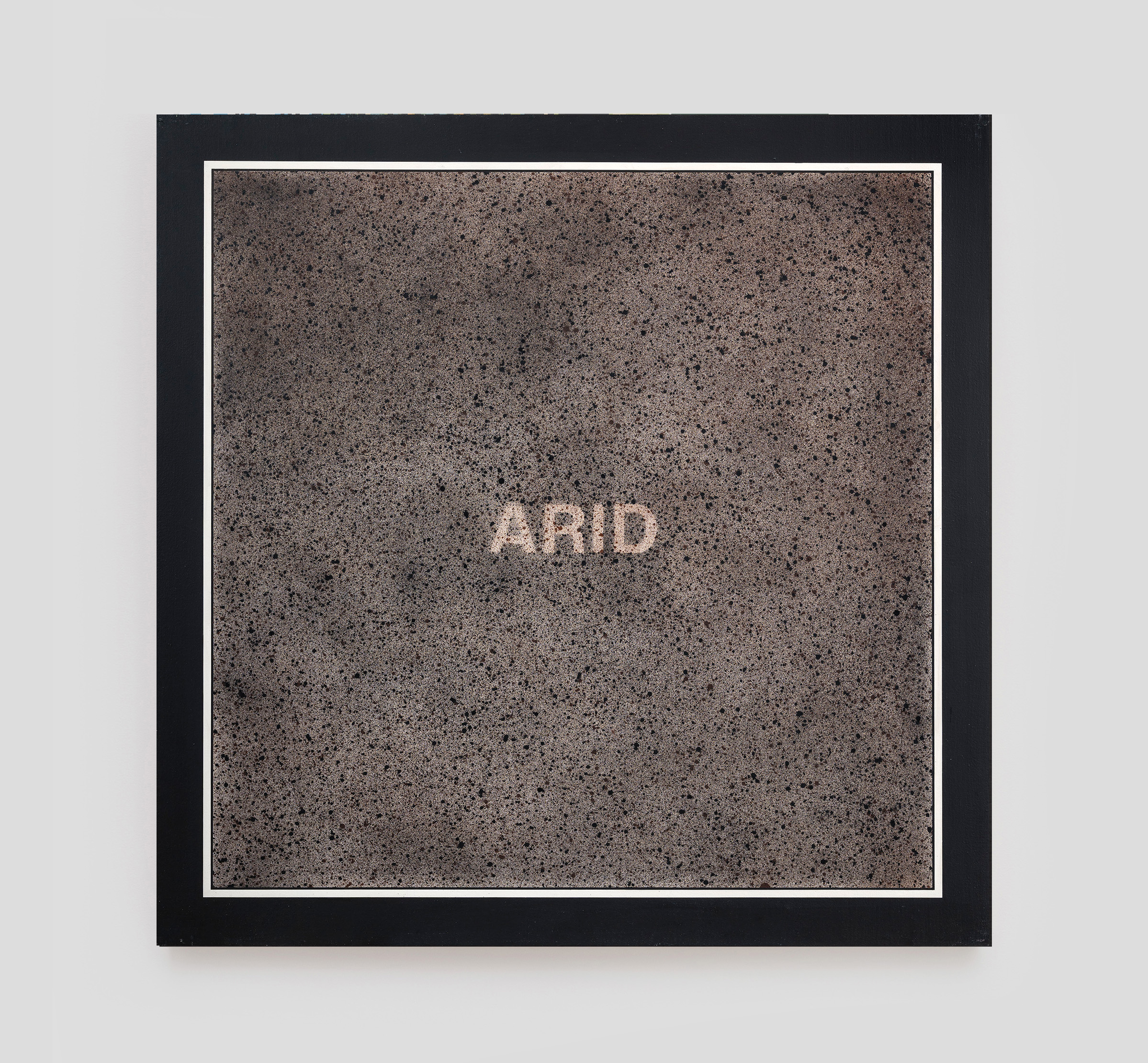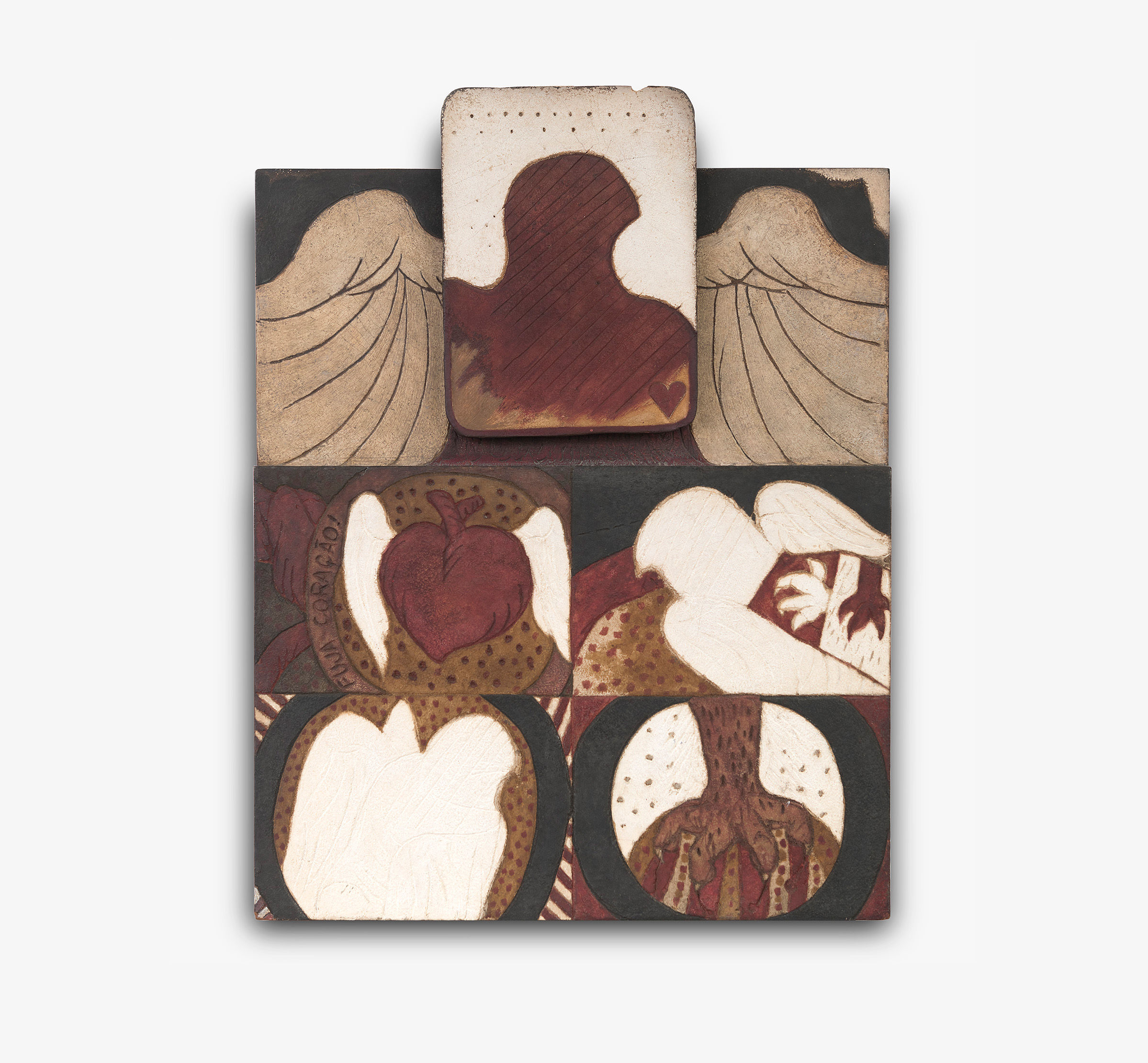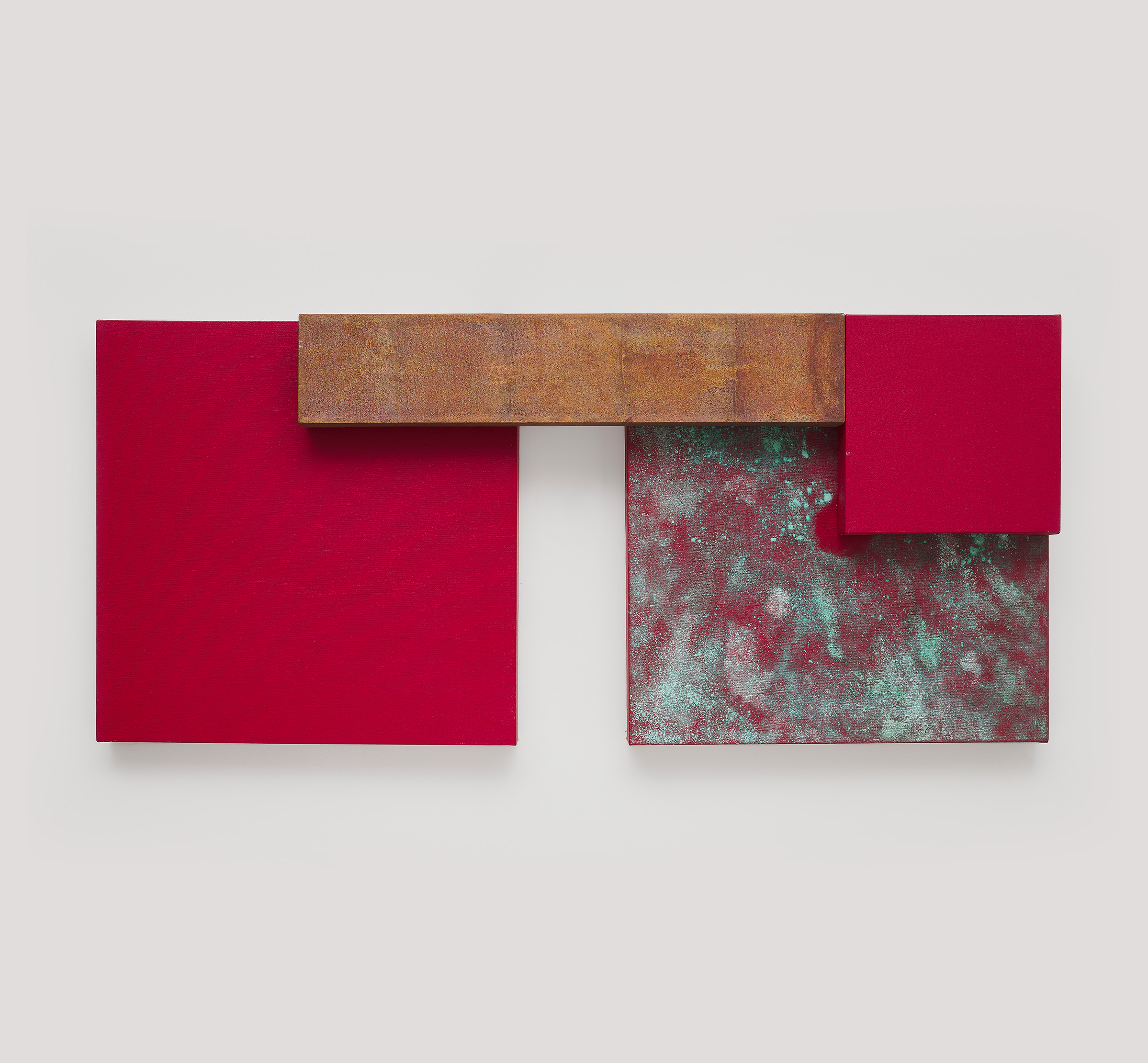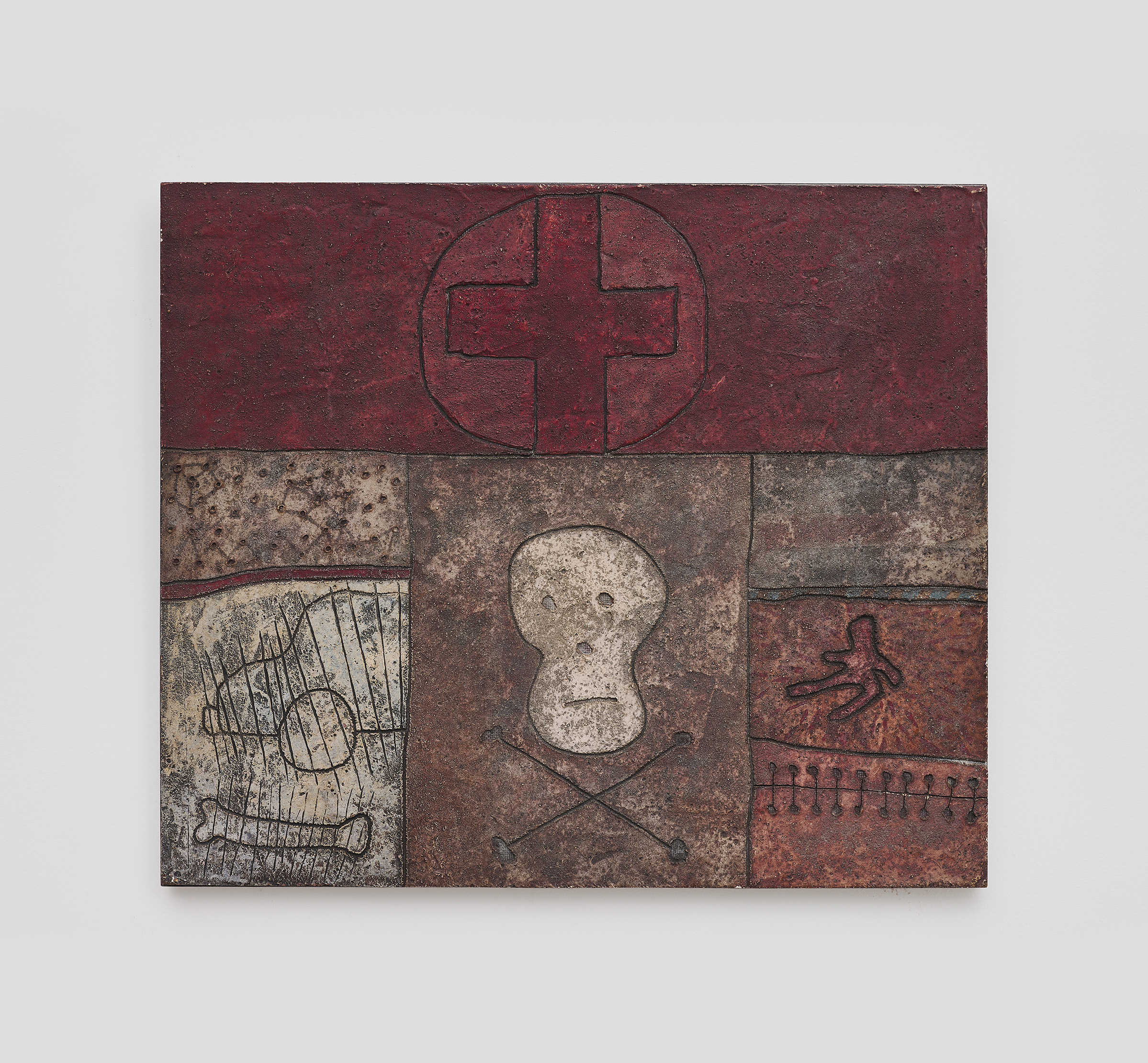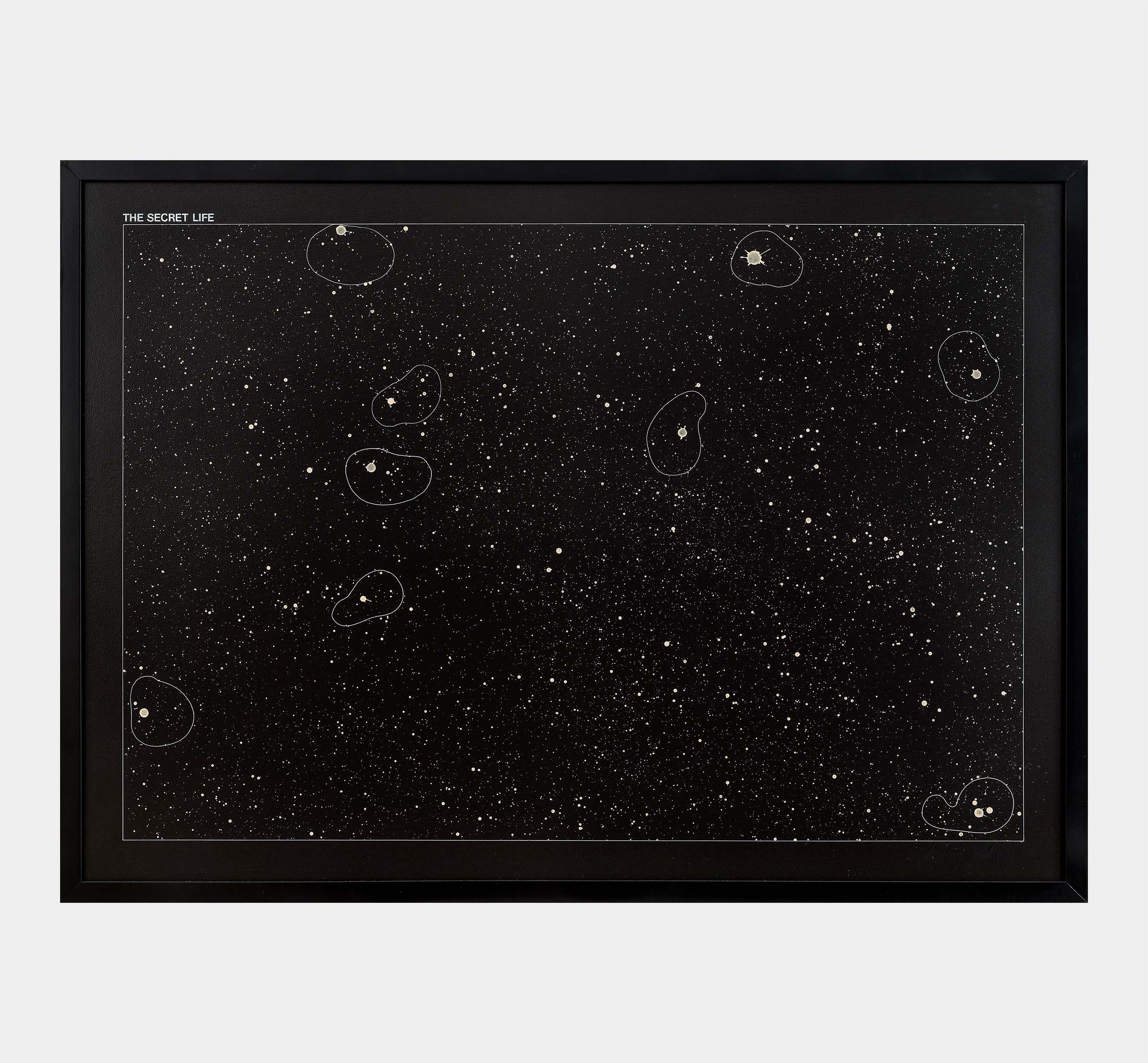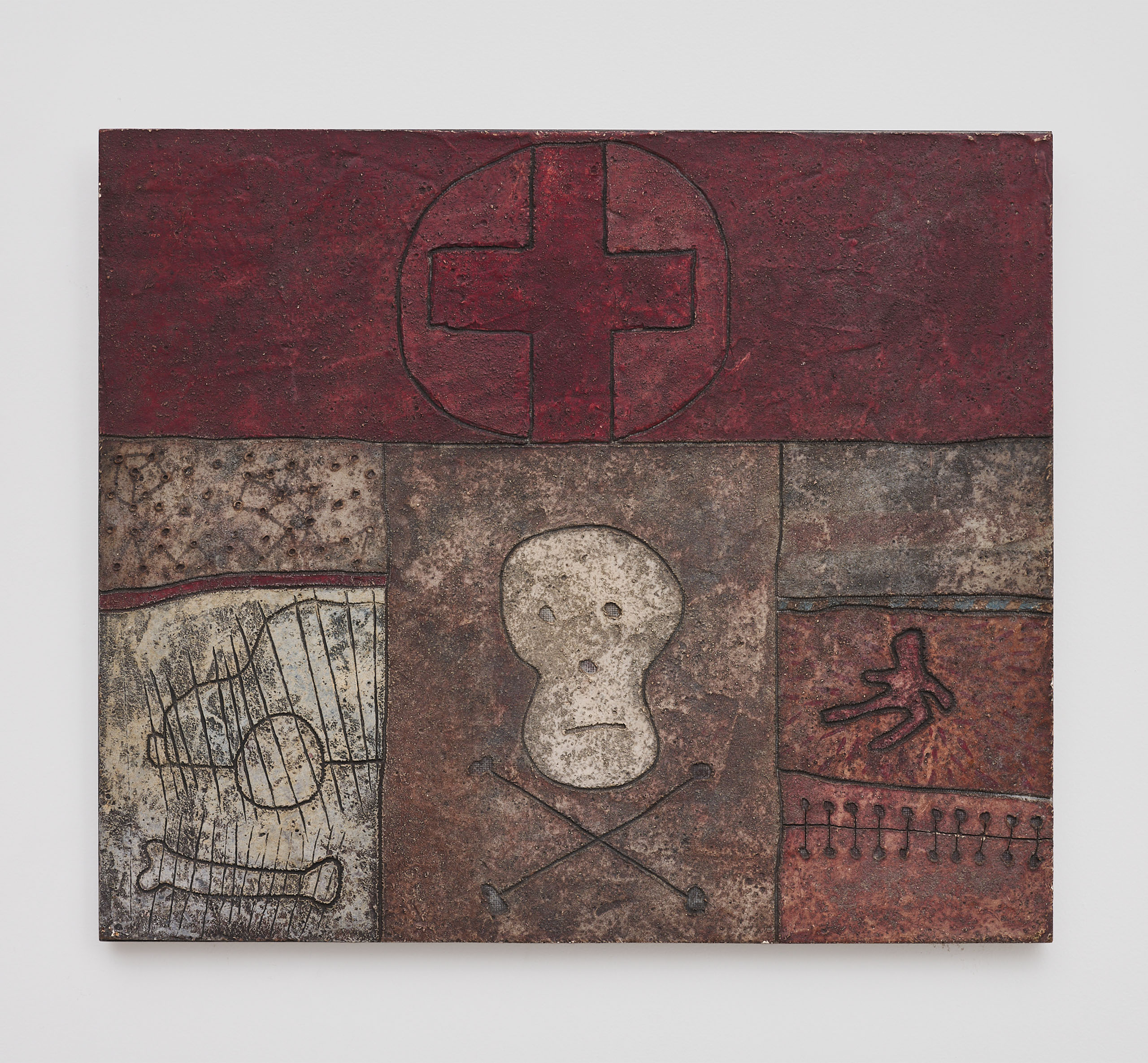Antonio Dias
Over a career spanning more than five decades, Antonio Dias developed a body of work marked by radicalism, experimentation, and a sharp perception of the artistic dilemmas of his time. He rose to prominence in the Rio de Janeiro art scene in the 1960s, amidst a generation of artists connected to the Brazilian New Objectivity movement, which sought to overcome traditional art supports, promote creative freedom, and critically analyze reality. His work explores and often combines various techniques, such as drawing, painting, installation, and objects.
Dias learned to read through comics, attended printmaking workshops with Oswaldo Goeldi, worked as a draftsman at the Ministry of Health, and was an illustrator for the magazine Senhor. His education occurred amid numerous political and social ruptures, such as the emergence of a repressive regime, the modernization of the city, and the convergence of heterogeneous cultural influences in art. Dias and many artists of his generation worked with images from popular culture, television, newspapers, and advertising, which led some art critics to associate his work with the international currents of Pop Art and Nouveau Réalisme. Today, however, these movements are seen as insufficient to explain the complexity of his language. Pop Art e do Nouveau réalisme, vistas, hoje, como insuficientes para explicar a complexidade de sua linguagem.
His early works feature paintings divided in the style of comic strips, where actions unfold that suggest plots of crime, death, and violence, with human figures that are merely silhouettes or shadows, and forms evoking entrails and genital organs. By the late 1960s and early 1970s, Antonio Dias transitioned from narrative paintings and objects to a two-dimensional body of work, stripped of figurative elements and focused on an exercise centered around the image-word relationship. This period saw the emergence of map and diagram images, which Dias used to address themes such as territory, belonging, and anonymity. This production coincided with the start of his self-imposed exile, during which he lived in Paris after receiving a scholarship from the French government for his participation in the 4th Paris Biennial.
Dias spent much of his life in Milan, also spending time in New York in 1972, when he received a Guggenheim Fellowship, before settling permanently in Europe. Another highlight of his career came from the works he created during a trip to Nepal, where he researched local paper-making techniques, resulting in a renowned set of woodcuts. He returned to Rio de Janeiro in 2010 and continued his painting practice, characterized in this later phase by supports made of planes of different sizes and colors, abandonment of figuration, and a greater focus on textures and chromatic combinations.
Throughout his extensive career, Dias received numerous awards and fellowships and taught at various institutions across Europe. He participated in the 39th Venice Biennale, several editions of the Paris Biennale, and the São Paulo International Biennale, which in its 34th edition dedicated a room to his 1970s paintings. He held solo exhibitions since 1962 and maintained a significant international presence throughout his career. His work is part of prestigious collections such as: The Museum of Modern Art (MoMA), New York; Daros Latinamerica Collection, Zurich; Museum Ludwig, Cologne; Museo de Arte Latinoamericano de Buenos Aires, Buenos Aires; Museum of Modern Art of São Paulo (MAM SP); Museum of Contemporary Art of USP (MAC USP); Pinacoteca do Estado de São Paulo; Itaú Cultural, among others.

